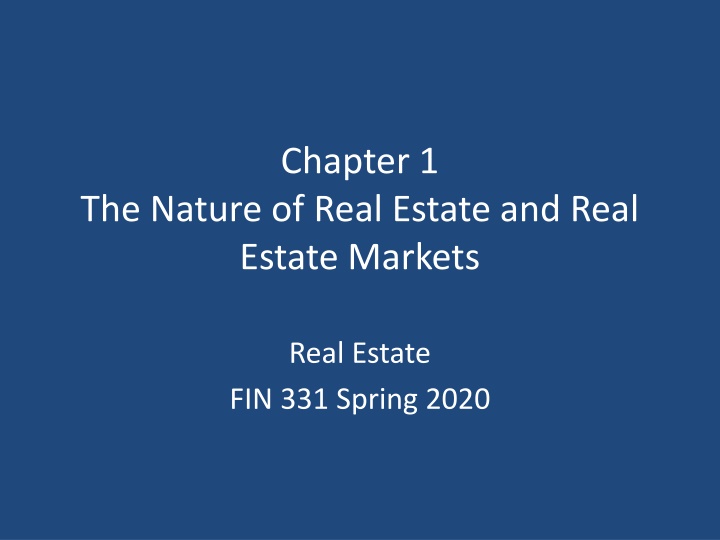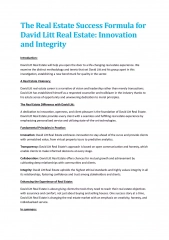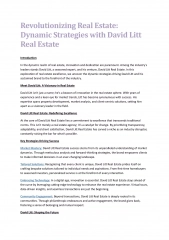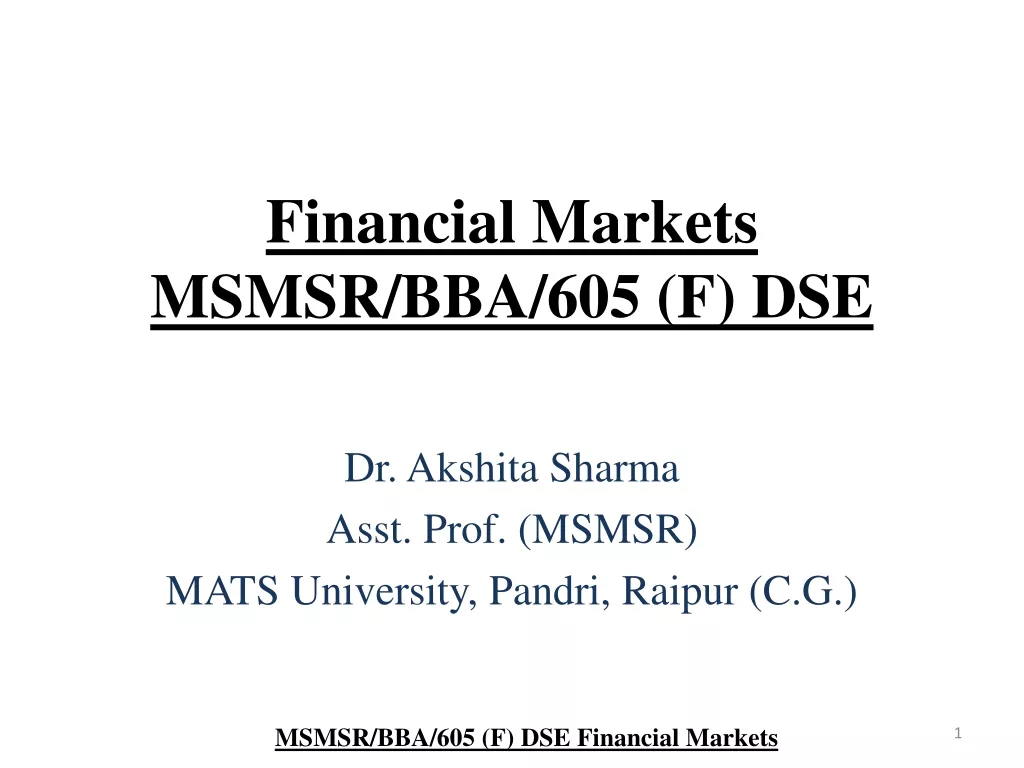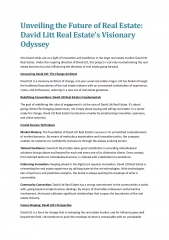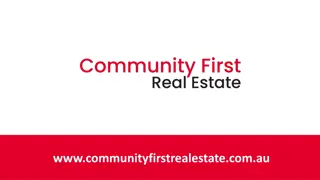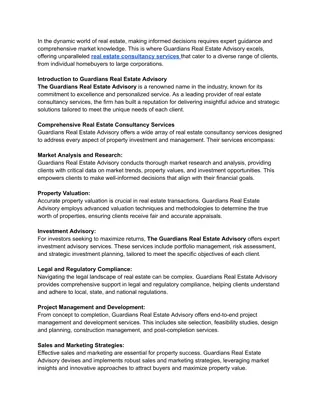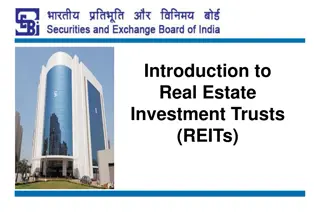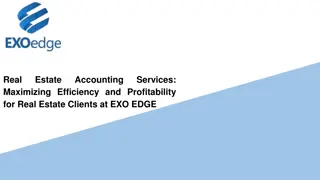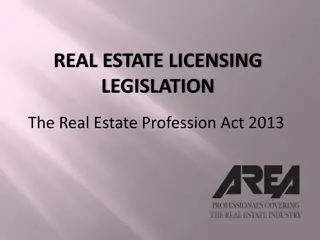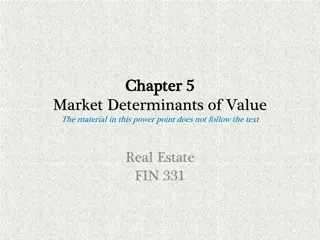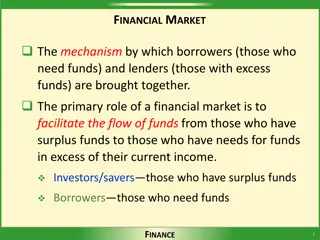Nature of Real Estate Markets and Course Objectives
Real estate plays a vital role in the global economy, with significant implications for wealth and investments. This course explores the fundamentals of real estate, ownership, finance, and market values, providing insights into property rights, law, and more.
Download Presentation

Please find below an Image/Link to download the presentation.
The content on the website is provided AS IS for your information and personal use only. It may not be sold, licensed, or shared on other websites without obtaining consent from the author.If you encounter any issues during the download, it is possible that the publisher has removed the file from their server.
You are allowed to download the files provided on this website for personal or commercial use, subject to the condition that they are used lawfully. All files are the property of their respective owners.
The content on the website is provided AS IS for your information and personal use only. It may not be sold, licensed, or shared on other websites without obtaining consent from the author.
E N D
Presentation Transcript
Chapter 1 The Nature of Real Estate and Real Estate Markets Real Estate FIN 331 Spring 2020
Getting through the Course A. Skim read assignments prior to class B. Real Estate related articles frequently appear in the media and will be sent to class as supplemental readings check your email regularly. C. Attendance Policy: I take attendance. More than 2 unexcused absences will result in the loss of one point for each additional absence.
Getting through the Course D. Homework will be collected at exam time. H/W counts for 10% of our grade. E. Exam Issues: 1.Please don t kill your grandmothers. If you cannot make the scheduled exam, email me BEFORE the exam. We ll schedule a later time. HOWEVER, the later time must be before the next class period. 2. The Alternative is the SOB exam. Spare yourself the grief. No one has passed the SOB exam.
ANY QUESTIONS? If not Let s start
FIN 331 Course Objectives Extend a student's basic awareness of real estate; real estate ownership, real estate value purchase and sale of varied interests in real estate real estate law and property rights fundamentals of finance as they apply to real estate values
Real estate is the single largest component of wealth in the global economy. The importance of real estate is highlighted in terms of its roles in the global and domestic economies, as well as its prominence in the investment portfolios of U.S. households. [Ling & Archer, Real Estate 4thed]
Aggregate Market Values of Selected Asset Categories: 2011
% Distribution of Land Use Millions of Acres Land Use Percent Forest 749 30.7% Farm / Agricultural 530 21.7% Grasslands 1066 43.6% Developed (built up) 98 4.0% 2443 100.0%
Chapter 1 General Concepts A. Types of Property 1. Tangible: Physical assets that can be owned. It can be real or personal property. 2. Intangible: Non-physical assets such as stocks, bonds, mortgages, leases B. Real Estate as a; 1. Tangible asset: raw land, Improvements to raw land, structures 2. Bundle of Rights: exclusive possession, use, disposition, can be unbundled 3. As a profession
Chapter 1 General Concepts C. Real Estate and the Economy 1. Half of the world s wealth 2. Generates over 28% of U.S. gross domestic product (GDP) 3. Housing alone accounts for almost 20% 4. Generates nearly 70% of local government revenue (property tax) 5. Creates jobs for nearly 9 million Americans D.Real Estate Values Determined by 1. User (Space) markets: physical real estate and supply vs. demand 2. Capital markets: RE competes for funds along with financial claims (stocks & Bonds) 3. Impact of governmental sector on rates: raising funds by selling debt securities.
Chapter 1 General Concepts E. Real Estate Markets and Participants 1. User Market: Buyers receive rights (or bundles of rights), generally segmented 2. Capital suppliers: households >>> financial institutions (banks, financial service companies) F. Characteristics of Real Estate Markets 1. Heterogeneous Products (no 2 alike in every aspect) 2. Markets localized and segmented 3. Private Markets a. Equity/Owners: from individuals to partnerships to LLC to specialized funds b. Debt/Lenders: Banks, thrifts, finance companies, private lenders 4. Public Markets a. Publicly traded REITs and real estate companies b. Commercial Mortgage-Backed Securities (CMBS) and mortgage REITs
Wall Street: Money Never Sleeps Gecko s talk on Financial Crisis
Real estate as an industry and profession Planning Government regulation and taxation Housing assistance Mortgage finance Construction finance Long-term finance Investment management Brokerage Development Leasing Property management Asset management Real Estate Law Appraisal Market consulting Counseling
User Market A. Market for the physical real estate B. Buyers receive right to use space 1. Called the space market or rental market C. Where prices/rents are determined D. These markets are very local and usually highly competitive E. Separate local markets for various property types: residential, retail, office, industrial, etc.
Capital Markets A. RE competes for funds in capital market with other asset classes, such as stocks and bonds B. Investors select a mix of investments based on expected returns & risk C. Bidding by investors determines: 1. risk free rates of various maturities (i.e., the Treasury yield curve) 2. required risk premiums for risky investments
Public Capital Markets A. Small homogeneous units (shares) of ownership in assets trade in public exchanges B. Many buyers and sellers C. Price quotes available for all to see D. Characterized by a high degree of liquidity E. Informationally efficient
Private Capital/Property Markets A. Absence of centralized market (or even price lists) B. Assets trade infrequently in private transactions (thus a lack of transparency) C. Common for whole assets to be traded in a single transaction (indivisibility) D. Less liquidity than public markets E. Higher transaction costs
Property (Asset) Market A. Market for ownership claims to RE assets B. Buyers/owners receive rights to cash flows generated by leasing space to tenants C. Demand (supply) side of property market is made up of investors wanting to buy (sell) property D. Property market is integrated, not segmented like space market 1. i.e., investment capital can come from anywhere
HOMEWORK ASSIGNMENT A. Important Key terms: Real Estate, Capital Markets, User Markets, Property Markets, Capitalization Rates, Tangible & Intangible Assets, Real Property B. Study Questions: 1, 3, 4, 5, 7
THE GREAT REAL ESTATE VALUE THE GREAT REAL ESTATE VALUE MELT MELT- -DOWN DOWN A.The Community Reinvestment Act (1977) [CRA] 1. Principle Objective: Increase home ownership in the US 2. Related Objectives: end practice of redlining by commercial banks 3. Requirements of the Act: The Act requires banks and thrifts to make loans throughout their entire market, operate depository facilities in certain neighborhoods, and collect data about lending habits to be periodically reported to federal supervisory agencies. These agencies use CRA ratings when evaluating applications for mergers and acquisitions.
THE GREAT REAL ESTATE VALUE THE GREAT REAL ESTATE VALUE MELT MELT- -DOWN DOWN A. CRA Act modified in 1995 1. Letter from General Council to Comptroller of the Currency a. In Re Small Business Loans Furthermore, the CRA regulations do not require an institution to verify revenue amounts; thus, the institution may rely on the gross annual revenue amount provided by the borrower in the ordinary course of business. b. In Re Consumer Loans The CRA regulations do not require an institution to verify income amounts; thus, the institution may rely on the income amounts provided by the borrower on the loan application. 2. The beginning of NINJA loans (No Income, No Job, No Assets)
THE GREAT REAL ESTATE VALUE THE GREAT REAL ESTATE VALUE MELT MELT- -DOWN DOWN C. Michelle Minton (Competitive Enterprise Institute) on Negative Results of CRA 1. Increased risk to banks: as CRA rankings increased, bank risk increased as measured by CAMEL ratings (Capital adequacy, Asset quality, Management, Earnings, Liquidity). 2. Increased costs to small lenders: includes the cumulative costs of writing riskier loans (e.g.; to buyers with low FICO scores). 3. Cites study by George Benston (Emory U) suggesting that larger banks made loans in low and middle income markets (LMI) at a loss. 4. Rent Seeking opportunity for activist organizations: e.g., ACORN received hundreds of thousands of dollars from JP Morgan and Chase Manhattan Bank in exchange for ACORN s approval of proposed mergers.
